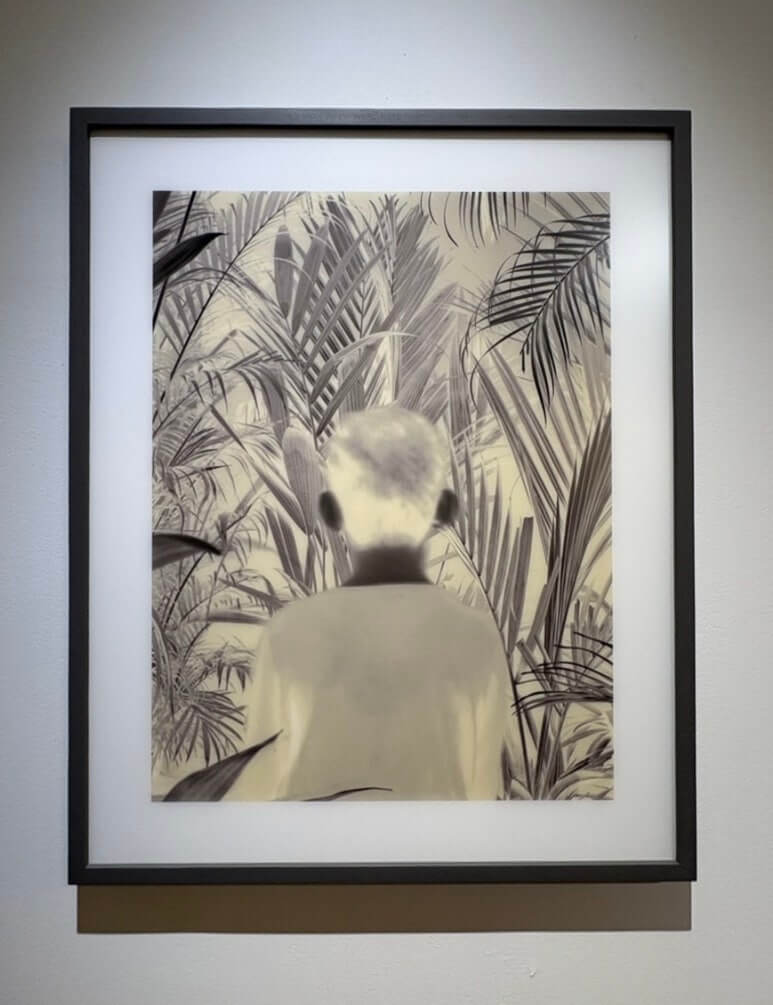천경우 개인전 《 Bird Listener 》 – 롯데갤러리 에비뉴엘 아트홀 사진 전시
천경우 개인전
《 Bird Listener 》
이번 롯데갤러리 에비뉴엘 아트홀에서는 2025년 첫 전시로 포토그래퍼이자 개념미술가로 활동 중인 천경우의 개인전이 열리고 있습니다.
보통 사진이라고 하면 순간적인 포착을 담아내지만 천경우 작가는 사진 본연의 속성을 넘어 다양한 매체와 퍼포먼스와 함께 관계와 시간, 행위의 축적을 다양한 방식으로 담아냅니다.
이번 전시에서는 이전에 플랫폼 엘(Platform L)에서도 선보였던 헬싱키 발리시리 비엔날레 커미션 작품인 《 Bird Listener 》를 선보이고 있습니다. 전시 제목 ‘새소리를 듣는 사람’이라는 의미로 경청을 하는 행위에 초점을 맞춰 표현하고 있습니다.
바쁜 현대사회는 수없이 많은 사람들과 관계 속에 소통하며 지내지만 정작 자신의 내면을 돌아보고 생각할 수 있는 시간은 턱없이 모자란 느낌입니다. 심지어는 그 관계조차 자신에게 필요한 연결인지 소음을 만들고 있는지조차 모르고 지나갈 때가 많은데요, 이번 전시는 그런 삶 속에서 자신만의 내면의 소리를 귀 기울여 볼 수 있는 좋은 전시라 생각됩니다.

그중에서도 새는 우리와 항상 가까이에 있지만 그저 스쳐 지나가는 동물로 인식할 때가 많습니다.
하지만 모든 것을 잠시 내려놓고 가만히 새소리에 귀를 기울여보면 새야말로 잠시 우리에게 휴식과 숨을 불어넣을 때가 많기도 합니다. 새와의 교감을 통해 잠시 일상에서 벗어나 자신만의 내면을 마주 보게 할 수 있는 동물이기도 하지요.
Resonance, 2023
가장 먼저 보이는 <레조넌스(Resonance)> 주로 이러한 듣는 사람들을 촬영한 사진으로 빛바랜듯한 피그먼트 프린트로 다양하게 표현했습니다. 마치 사진보다는 그림 같은 어떤 정글 숲속에 들어간 몽환적인 이미지를 표현하는 작품들로 주를 이룹니다.





Bird Listener, 2021/2024
입구에 들어서면 이렇게 전시를 관람 후 자신만의 새를 그려보는 체험공간도 마련되어 있는데요, 이번 전시는 사진뿐만 아니라 직접 소리를 듣고 연주를 하고 체험할 수 있는 공간들이 마련되어 있습니다.


가사 없는 노래, 2021
또한 <가사 없는 노래>라는 작품에서는 해당 패널을 가지고 종 앞에서 번호 순서대로 종을 치면 또 다른 멜로디를 만날 수 있기도 합니다. 일종의 언어보다 소리로 소통하는 방식인데 이는 농아인이 소리로 자신만의 목소리를 표현한 것이라고 하네요.


나무들을 위한 노래, 2023
두 개의 채널로 이루어진 영상은 앞서 본 사진 연작인 <나무들을 위한 노래>는 2명의 여자, 남자 어린이가 오랫동안 구전으로 전해져온 인도 소수 언어로 부르는 노래를 들을 수 있는데 뭔가 애잔하면서도 따뜻한 느낌입니다.
마치 어릴 적 할머니가 손주에게 불러주는 노래처럼 느껴지기도 했고 여자 남자 어린이가 각각 다른 목소리로 들려주어서인지 각각 다른 느낌으로 들려오기도 합니다.
이 밖에도 천경우 작가의 다른 연작들도 동시에 선보이고 있습니다.


Brea Things, 2008-2009
<Brea Things>라는 작품은 2000년대 후반 독일과 스페인에서 제작된 작품으로 Breathing(숨 쉬다)과 Things(물건)을 결합한 단어로 일상의 사물은 그 사람을 나타내기도 한다는 것을 전제로 오브제를 사람 손에 쥐거나 맞닿은 것으로 표현하였습니다.
무엇을 수집하고 가지고 있느냐는 그 사람의 취향을 반영하기도 하지만 곧 취향이 그 사람을 표현하기도 하다는 것을 나타내는데요, 때로는 어떤 것을 취하고 선택하는 것이 생각보다 중요함을 암시하는 듯하기도 합니다.
좋은 것을 취하면 좋은 사람이 되기도 하지만 나쁜 것을 취하면 나쁜 사람이 되기도 하는 것처럼 말이지요.


엄지의 규칙, 2023
스마트폰에 매달리는 현대인들을 표현한 <엄지의 규칙>시리즈는 언뜻 보면 단순한 사물을 담아낸 것 같지만 각각 손에서 쥐어진 사물들이 각자의 취향을 담아내기도 하면서도 어딘가 상처가 난 부분은 그 안에서 마주하며 느끼는 심적인 상처들을 표현하기도 합니다.
우리는 수많은 매체를 작은 스마트폰에서 만나면서 이전에 보지 않아도 되는 나와는 관계없는 세계와 마주하게 되는 경우들이 많습니다. 그 안에서 자신이 비교되는 순간 초라해지기도 하고 때로는 좋은 관계망과 이어지기도 하지만 생각지 못하는 상처들을 받게 되는데 이러한 면을 사진으로 잘 담아내지 않았나 싶습니다.



기존의 사진 작품에 대한 개념을 조금은 다르게 생각할 수 있는 작품이기에 특히 사진에 관심 많으신 분들에게는 좋은 전시가 아닐까 싶습니다.
작품 수가 많은 편은 아니지만 하나하나가 모두 좋은 작품이고 조용히 생각해 볼 수 있는 사진들입니다.
시간이 되신다면 잠시 틈을 내어 꼭 관람해 보시길 추천드립니다.
전시 기간 : 2025. 3. 1 – 2025. 5. 25
관람 시간 : 월~일 10:30am – 8:00pm
장소 : 롯데백화점 잠실점 에비뉴엘 아트홀 6F
천경우 개인전 《 Bird Listener 》 – 롯데갤러리 에비뉴엘 아트홀 사진 전시 더 읽기"


















































































.jpg)




































































